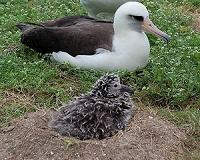 |
Bangkok (AFP) March 11, 2011 For many years Southeast Asia had a bountiful supply of elephants to satisfy Thailand's ivory traffickers, but the decimation of the species has seen them turn to Africa for their plunder. The more than 1,600 tusks seized since the beginning of 2009 by Thai customs indicate that more than 800 elephants were slaughtered to feed a murky and voracious international market. "Thailand is still ranked number one" in the ivory traffic rankings, said Chris Shepherd, deputy manager for Southeast Asia at wildlife protection group Traffic. International trade in ivory was banned in 1989, but seizures have risen dramatically in the past five years. Experts say the trade is passing through organised networks often linked to the smuggling of rare animals from Mozambique, Tanzania or Kenya. "When you order ivory for decoration, one elephant will be killed -- the killer is demand," said Lieutenant Colonel Adtapon Sudsai, investigation chief at the Natural Resource and Environment Crime Suppression Department. Some of the ivory imported -- sometimes delivered without even being cleaned of the elephant's blood -- is destined for the Thai market. Certain "businessmen or senior government officers" in the kingdom like to hang large mammals' tusks on their walls as a symbol of their power, notes Seri Thaijongrak, director of the Royal Thai Customs' investigation bureau. Tourists also enjoy looking at the jewels and small animals carved by specialist craftsmen in northern Nakhon Sawan province, who worked traditionally with the ivory of Thailand's native elephants. Thailand's ivory sculpting tradition started in the late 19th century when an estimated 100,000 elephants roamed the kingdom. Since then most have been lost to poachers and the clearing of their forest habitat. Now just a few thousand remain -- many of them working in the tourism industry -- and the ivory traffickers have turned to the pachyderms' African cousins to meet considerable Asian demand. Benefiting from its location, Thailand exports much of the ivory, rough or carved, to China -- where it is traditionally used in medicinal powders -- and Japan. But some also ends up in the United States and Europe. Critics say the authorities need to take tougher action. "We are not seeing significant prosecutions," said Justin Gosling, of Interpol's environmental crimes department in the Asia-Pacific region. "Seizures must be met with prosecutions, and not (just) prosecution of the transporters, poachers and consumers, but the key people controlling this trade," he added. Experts are pessimistic about justice being done, with a lack of communication between Bangkok and relevant African authorities and inadequate training of the customs and police officers. "Wildlife crime in these parts of the world still is not seen as a priority," said Shepherd. When financial means exists, they are on the wrong side of the battle, experts say, with much remaining to be done against corruption. "In order to smuggle these huge quantities, there need to be corrupt officials involved in this," insists Gosling. The local press recently reported on the disappearance of ivory stocks in a customs warehouse, an incident that does not appear isolated. But even the most optimistic admit that the fight is a difficult one. The ivory confiscated by customs since 2009 is worth nearly 250 million baht (nearly six million euros), and such success means the traffickers "will probably change their tactic," said Gosling. In anticipation of such a switch, customs officials -- who recently made seizures at a Bangkok airport -- have been reinforcing controls at ports, said Seri -- but he warned it was hard to keep up. "We are always one step behind them," he said. "Maybe many steps behind."
Share This Article With Planet Earth
Related Links Darwin Today At TerraDaily.com
 Oldest Known Wild Bird In US Returns To Midway To Raise Chick
Oldest Known Wild Bird In US Returns To Midway To Raise ChickMidway Atoll, Pacific (SPX) Mar 11, 2011 The oldest known U.S. wild bird - a coyly conservative 60 - is a new mother. The bird, a Laysan albatross named Wisdom, was spotted a few weeks ago with a chick by John Klavitter, a U.S. Fish and Wildlife Service biologist and the deputy manager of the Midway Atoll National Wildlife Refuge. The bird has sported and worn out 5 bird bands since she was first banded by U.S. Geological Survey ... read more |
|
| The content herein, unless otherwise known to be public domain, are Copyright 1995-2010 - SpaceDaily. AFP and UPI Wire Stories are copyright Agence France-Presse and United Press International. ESA Portal Reports are copyright European Space Agency. All NASA sourced material is public domain. Additional copyrights may apply in whole or part to other bona fide parties. Advertising does not imply endorsement,agreement or approval of any opinions, statements or information provided by SpaceDaily on any Web page published or hosted by SpaceDaily. Privacy Statement |